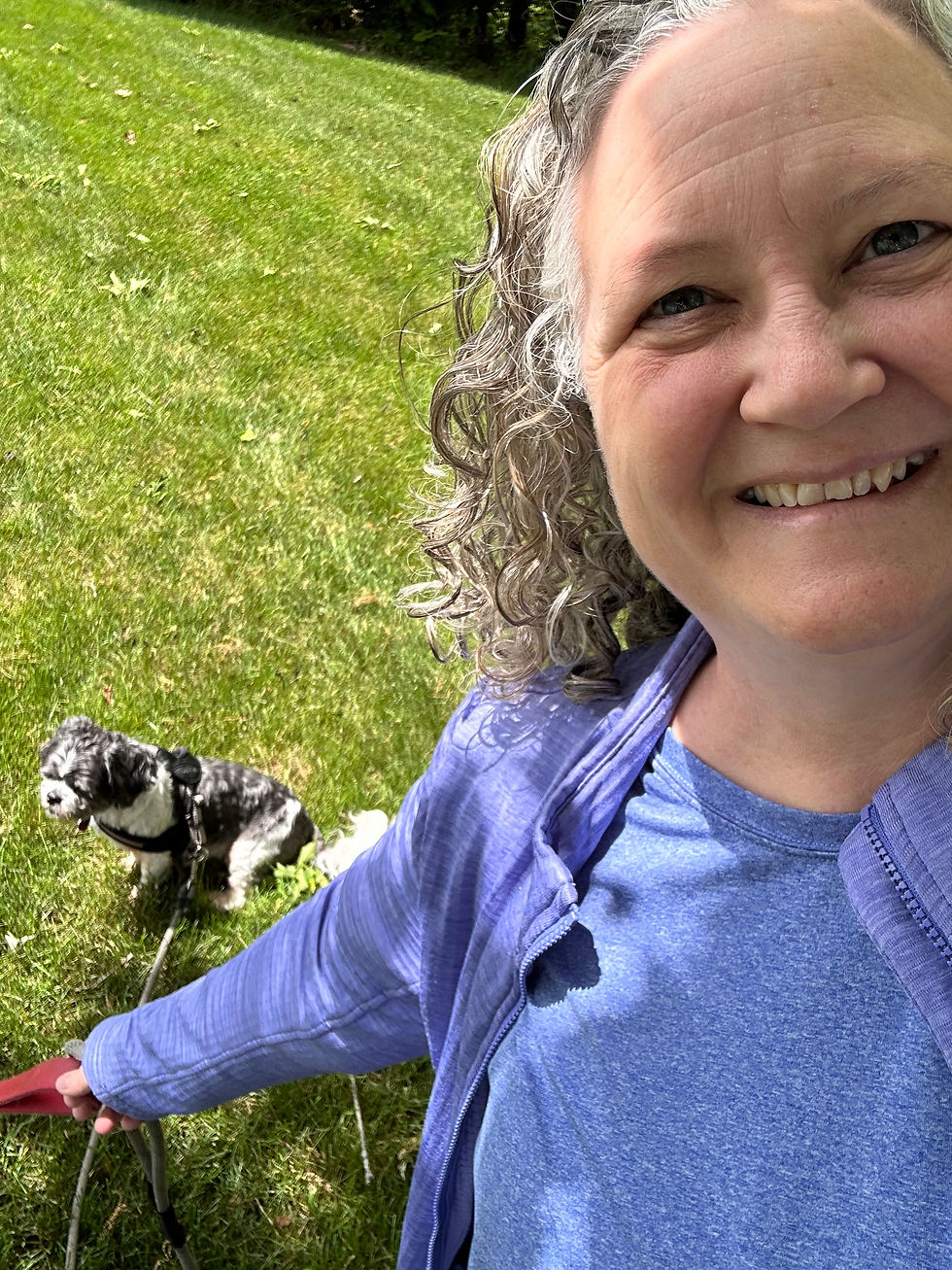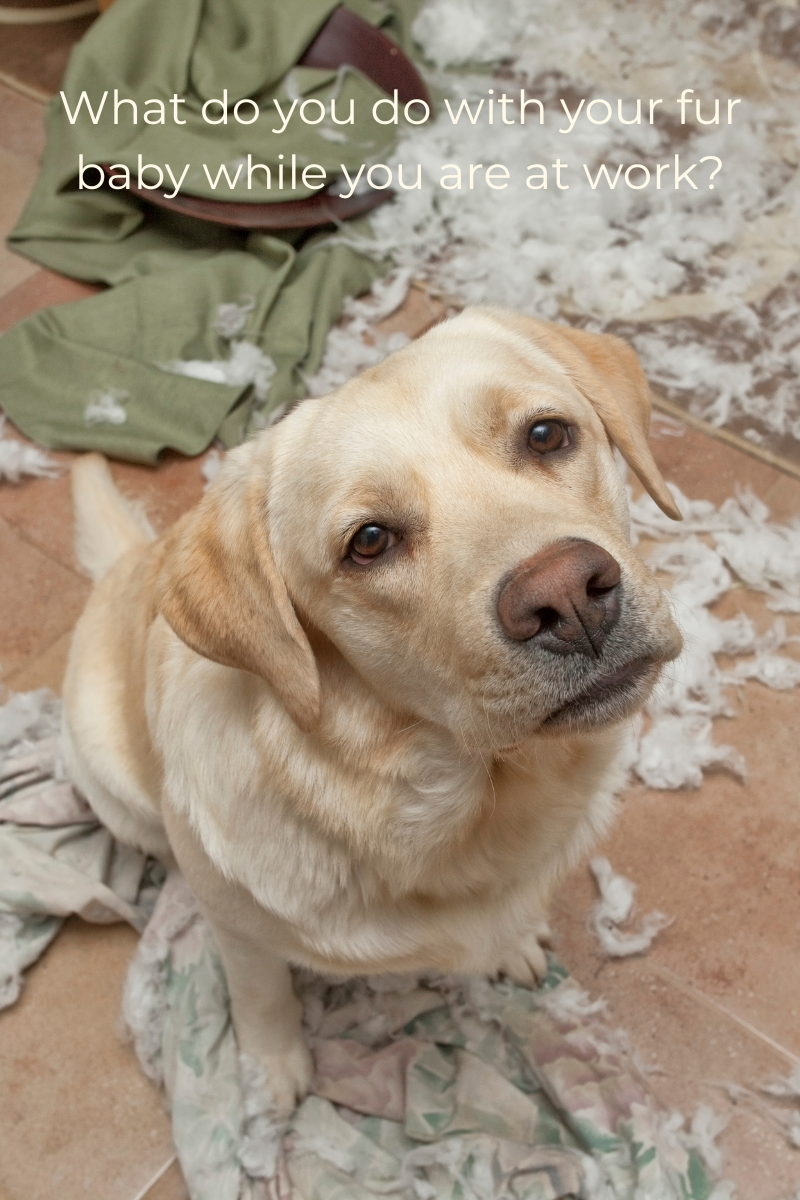The 9-to-5 Pup: Creating a Daily Routine That Works for Both You and Your Dog
- Pawsh Pet auPairs

- Sep 9, 2025
- 6 min read
For many professionals, the love of a dog collides with the reality of a demanding career. Long hours, commutes, and unpredictable workdays often mean leaving your four-legged friend home alone for most of the day. The result? Guilt for you, boredom or anxiety for your dog, and sometimes even chewed furniture, accidents on the carpet, or non-stop barking that neighbors aren’t thrilled about.

The good news: with some planning, resources, and consistency, you can create a daily routine that keeps your dog healthy, happy, and stimulated while fitting seamlessly into your busy lifestyle. Here’s how to design a routine that works for both you and your pup.
Why Dogs Struggle with the 9-to-5 Lifestyle
Dogs are social, active animals that thrive on interaction, structure, and exercise. According to the American Kennel Club (AKC), most dogs should not be left alone for more than 4–6 hours at a time, though it varies by age, breed, and temperament. Puppies and high-energy breeds like border collies, retrievers, and shepherds need even more stimulation and activity.
Without enough engagement:
Boredom leads to mischief — chewing, digging, or counter-surfing.
Loneliness sparks anxiety — pacing, whining, or destructive behaviors.
Lack of exercise affects health — contributing to obesity, joint problems, and decreased lifespan.
So, the challenge isn’t just about avoiding accidents or destruction—it’s about giving your pup the life they deserve while maintaining your own busy schedule.
Morning: Setting the Tone for the Day
For dogs, mornings set the rhythm of the entire day. Studies in canine behavior consistently show that exercise early in the day not only burns off physical energy but also lowers cortisol, the stress hormone that contributes to anxiety when a dog is left alone. If you’ve ever noticed that your pup seems calmer after a brisk walk or a game of fetch, that’s no coincidence—exercise before you head out the door helps them settle into a more relaxed state while you’re gone.
Imagine the difference between a dog who’s had forty minutes of walking, sniffing, and exploring versus one who rolled straight out of bed into an empty apartment. The first is content to nap, while the second is primed for boredom. Pairing that exercise with a mentally stimulating breakfast—like a snuffle mat or a puzzle feeder—adds another layer of enrichment. According to veterinary behaviorists, puzzle feeding can reduce anxiety-related behaviors and lengthen meal time five to tenfold, transforming breakfast into both a meal and an activity.
Just as important as the activity itself is the way you leave. Dogs are emotional sponges; if you rush out the door with guilt, fanfare, or drawn-out goodbyes, your pup can interpret your departure as something alarming. By contrast, calmly slipping out after exercise and enrichment helps normalize your absence, teaching them that being alone is simply part of the daily routine.
Midday: The Critical Break
Even the most well-adjusted dog struggles to go eight, ten, or twelve hours without a break. Veterinarians generally recommend that adult dogs be given an opportunity to relieve themselves at least every six hours, while puppies and seniors require even more frequent outings. Beyond bathroom needs, midday activity is a lifeline for dogs whose owners work long days.

Professional dog walkers and pet sitters can fill this gap, providing not only relief but also companionship and exercise. A thirty-minute visit can make the difference between a dog who paces anxiously all afternoon and one who spends the rest of the day peacefully resting. Research published in the Journal of Veterinary Behavior has shown that structured breaks during the day significantly decrease destructive behaviors and separation-related stress. For dogs who thrive on social interaction, doggy daycare can be transformative, offering hours of play under supervision.
Dogs are pack animals; consistent human interaction throughout the day reassures them and helps prevent the loneliness that fuels undesirable behavior. For professionals with long or unpredictable schedules, planning this midday break isn’t a luxury—it’s a cornerstone of responsible dog ownership.
Evening: Reconnecting and Unwinding
When you finally walk through the door after a long day, your dog has likely been anticipating that moment for hours. The energy they greet you with is a reflection of unmet needs during your absence, but it also presents an opportunity: evenings are the time to reconnect, exercise, and bond.
A second session of physical activity, whether a walk, a jog, or backyard play, helps reset your dog’s body and mind. The Association of Professional Dog Trainers (APDT) emphasizes that dogs who receive both morning and evening exercise are less likely to develop behavioral problems related to pent-up energy. Once their physical needs are met, you can shift into mental engagement—short training sessions, nose work games, or teaching new tricks. These activities tap into your dog’s natural instincts, providing stimulation that can be just as tiring as a long walk.
Finally, evenings are also about winding down together. Dogs are social animals who crave closeness, and time spent curled up beside you during dinner or while watching TV is as important as exercise. That quiet companionship reassures your pup that you are present, safe, and part of their “pack.”
Nighttime: Setting Up for Success
As the evening winds down, the final step in your dog’s daily rhythm is preparing for rest. Just as with humans, dogs benefit from rituals that signal the transition from activity to sleep. A short stroll around the block or a calm potty break before bed not only prevents overnight accidents but also serves as a natural cue that the day is ending.
Consistency is the secret here. When dogs know what to expect, they relax more easily, and a predictable nighttime routine helps reduce restlessness or pacing. The physical and mental engagement from earlier in the day—walks, play, training, and companionship—lays the groundwork for deeper, more restorative sleep. With their needs met and energy released, most dogs are content to curl up for the night, leaving you both ready to recharge for the next day.
Tools and Strategies to Support a Busy Schedule

Even with the best intentions, work and life sometimes get in the way. Here are a few
tools that can help bridge the gap:
Interactive cameras (like Furbo or Petcube). Let you check in, talk to, and even toss treats to your dog remotely.
Automatic feeders. Useful if your pup needs smaller meals throughout the day.
Chew toys and puzzles. Provide long-lasting entertainment and reduce boredom-induced destruction.
Crate training or designated safe spaces. For some dogs, having a cozy den-like area reduces anxiety when left alone.
Addressing Guilt: You’re Not Alone
Many professionals feel torn between career obligations and pet ownership. But caring for your pup while working full-time isn’t about doing everything perfectly—it’s about making intentional choices that meet their needs consistently.
If guilt is weighing on you, remind yourself that investing in solutions like a dog walker, sitter, or daycare isn’t indulgent—it’s essential. Your dog gets the stimulation and care they need, and you get peace of mind knowing your home will be intact (and your dog happier) when you return.
Sample Daily Routine for the 9-to-5 Pup
Here’s what a balanced day might look like for a full-time professional:
6:30 AM – Morning walk or run (30 minutes).
7:15 AM – Breakfast with enrichment toy.
8:00 AM – Calm departure for work.
12:30 PM – Dog walker or daycare break (30–60 minutes).
6:00 PM – Evening walk or play session (30 minutes).
7:00 PM – Dinner.
8:00 PM – Training, games, or cuddles while you unwind.
10:00 PM – Final potty break.
Final Thoughts
Owning a dog while managing a demanding career isn’t always easy, but it is absolutely possible. With a structured routine, smart use of resources, and a little creativity, you can ensure your pup’s needs are met—even on your busiest days.
When your dog is exercised, engaged, and cared for, you’ll notice the difference not only in their behavior, but also in your peace of mind. And at the end of a long workday, there’s nothing better than coming home to a calm, happy pup who’s ready to greet you with tail wags instead of chewed-up shoes.
If your busy schedule makes it hard to give your pup the care and attention they need during the workday, you don’t have to do it alone. At Pawsh Pet auPairs, we specialize in personalized, in-home care that keeps your dog happy, healthy, and relaxed until you return. Whether it’s a midday walk, playtime, or overnight sitting, our mission is to make sure your furry family member feels loved and cared for—just as if you were there yourself.
🐾 Ready to create a routine that works for both you and your pup? Contact us today to schedule a consultation and see how Pawsh Pet auPairs can help keep tails wagging while you’re at work.








Comments